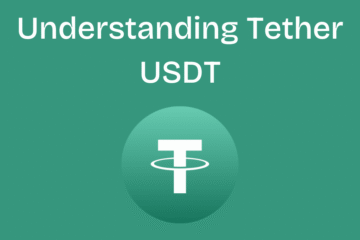
Understanding Tether USDT: The Stablecoin Pioneer Reshaping Finance
Table of Contents
Introduction
Tether (USDT) is the world’s first and most widely adopted stablecoin, designed to bridge the gap between traditional fiat currencies and the volatile cryptocurrency market. Pegged 1:1 to the U.S. dollar, USDT combines the stability of fiat with the speed, transparency, and accessibility of blockchain technology. As of April 2025, Tether’s market capitalization exceeds $144 billion, making it the third-largest cryptocurrency globally and a cornerstone of the crypto economy. This post explores Tether’s origins, mechanics, and the benefits it offers to users worldwide.
The Birth of Tether USDT: A Response to Volatility
Tether was conceived in 2014 under the name RealCoin by co-founders Brock Pierce, Reeve Collins, and Craig Sellars. Initially built on Bitcoin’s blockchain via the Omni Layer protocol, the project aimed to create a stable digital asset that could mitigate crypto’s notorious price swings. By November 2014, it rebranded to Tether (USDT) and began issuing tokens backed 1:1 by U.S. dollars held in reserve.
Early Challenges and Controversies
Tether’s journey wasn’t without turbulence. In 2017–2018, concerns arose about the transparency of its reserves, particularly after revelations that Tether had loaned 700 million to its sister company, Bitfinex, to cover liquidity short falls. Regulatory scrutiny followed, culminating in a 2021 settlement with the New York Attorney General (NYAG) and the Commodity Futures Trading Commission (CFTC). Tether agreed to pay 41 million in fines and enhance transparency, marking a turning point in its governance.
How Tether Works: Mechanics of Stability
Reserve-Backed Model
Tether’s stability hinges on its reserves, which include cash, cash equivalents (like U.S. Treasury bills), secured loans, and even small allocations to Bitcoin and gold. As of Q1 2024, over 84% of reserves are held in ultra-liquid assets, with daily updates published on Tether’s Transparency page. This collateralization ensures that every USDT in circulation is theoretically redeemable for $1, though redemptions require stringent KYC checks and minimum thresholds.
Multi-Chain Expansion
Originally confined to Bitcoin’s Omni Layer, USDT now operates across 16+ blockchains, including Ethereum, Tron, Solana, and Algorand. This multi-chain strategy enhances accessibility, allowing users to transact USDT on networks optimized for speed (e.g., Solana) or DeFi integration (e.g., Ethereum)
Key Benefits of USDT
1. Price Stability in a Volatile Market
USDT’s 1:1 peg to the dollar shields users from crypto’s wild price swings. Traders use it to “park” funds during market downturns, while merchants accept it as a stable payment method. During crises like the 2022 TerraUSD collapse, USDT maintained its peg, briefly dipping to $0.96 before rebounding, proving its resilience.
2. Liquidity and Trading Efficiency
As the most traded cryptocurrency by volume, USDT dominates crypto trading pairs. Its liquidity minimizes slippage, enabling seamless conversions between volatile assets like Bitcoin and fiat. Exchanges rely on USDT to offer USD-denominated trading without banking hurdles.
3. Cross-Border Payments and Remittances
USDT slashes the cost and time of international transfers. For example, migrant workers in the Philippines use USDT for remittances, avoiding high fees from traditional services. Partnerships with platforms like Coins.ph further drive adoption in underserved regions.
4. DeFi and Yield Opportunities
In decentralized finance (DeFi), USDT serves as collateral for lending, liquidity pools, and yield farming. Its stability makes it a preferred asset for protocols like Aave and Compound, where users earn interest without exposure to volatility.
5. Regulatory Compliance and Transparency
Post-2021 reforms, Tether publishes quarterly reserve attestations by BDO Italia and collaborates with law enforcement to freeze illicit funds. These measures aim to rebuild trust, though critics still call for full audits.
USDT’s Evolution: Beyond USD
Tether has diversified beyond the dollar, launching euro- (EURT), peso- (MXNT), and gold-pegged (XAUT) tokens. It’s also investing in renewable energy mining in Uruguay and blockchain education in regions like Turkey and Georgia, signaling ambitions beyond stablecoins.
Conclusion: USDT, A Pillar of Modern Finance
Tether’s rise mirrors crypto’s maturation from a speculative asset class to a functional financial tool. While controversies over reserves persist, its role in providing stability, liquidity, and global access to dollars is undeniable. As Tether expands into AI, mining, and education, it continues to shape the future of money—bridging traditional finance and blockchain innovation.
For investors and users, USDT remains a double-edged sword: a revolutionary tool tempered by the need for vigilance. Yet, in a world craving financial inclusion and efficiency, Tether’s benefits often outweigh its risks, securing its place as a crypto cornerstone.




